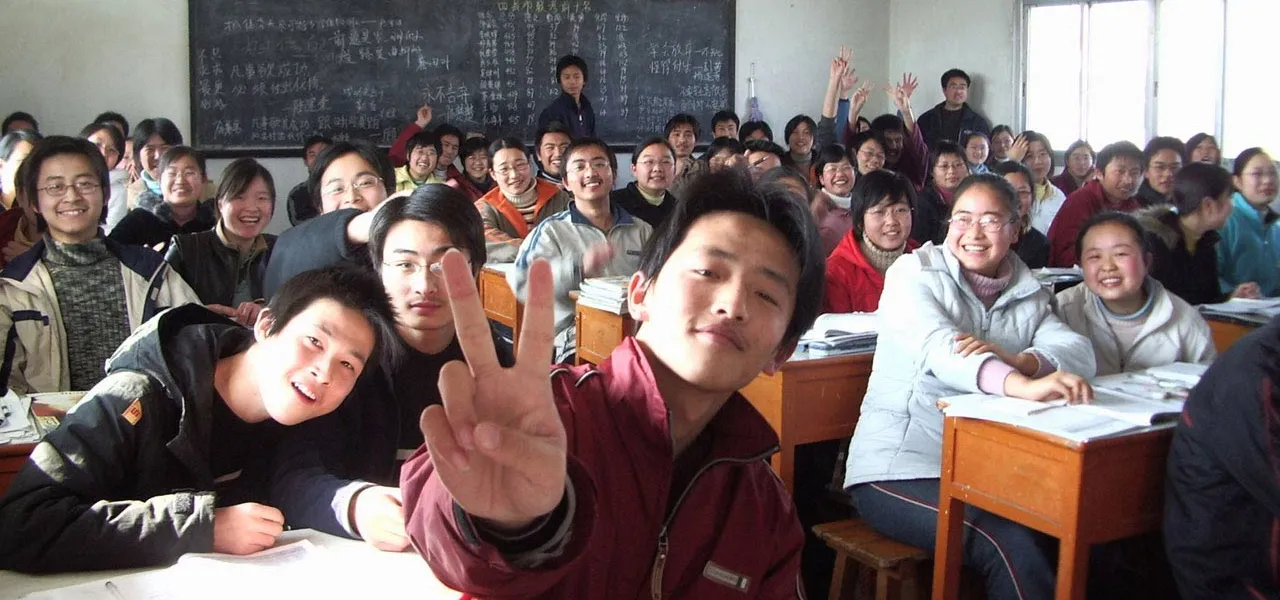The many songs at the start and end of classes at Chinese schools
Probably, you have never heard of my favorite song in China, that is unless you also spend a lot of time in the classrooms at Tsinghua University. I would recommend it, but I admit that I don’t know who it’s by, haven’t got a clue what it’s called, and couldn’t tell you where to get it. It’s the short, sweet tune that signals the end of class.
Ask anyone what sounds schools typically play to signal the start or end of class, and they’ll probably answer “bells.” But it doesn’t have to be this way. In Dallas, Texas, for example, local radio station K104 used to broadcast the Nelda Washington song “I Love School” every weekday at 7 a.m. to get sleepy students in the mood for studying, and in many schools in the US, the day begins under the drone of students saying the pledge of allegiance to the US flag.
In Chinese schools, though, music may not just be daily, but all day. There are wake-up songs, morning study songs, lining-up-for-morning-assembly songs, morning assembly songs, flag-raising songs, preparing-for-morning-exercises songs, morning exercises songs…even a genre of music known as schoolyard folk. In and outside of school, the smooth sax sounds of Kenny G accompany the shoppers and loiterers who are “Going Home.”
The songs that begin and end class periods are particularly interesting for a few reasons. Firstly, they are the only songs, with the exception of schoolyard folk songs, that may last throughout one’s academic career in China—it’s unlikely that students will still be having wake-up calls and mandatory morning exercise in college. Secondly, it’s not necessary that schools play any tunes between classes. While it’s required that “March of the Volunteers,” China’s national anthem, is played during schools’ flag raising ceremonies, and songs such as “We Are the Heirs of Communism” (中国少年先锋队队歌) help to remind children of their national duty, the songs between school periods could be just as effective if replaced by a bell.
Many of the school sounds that begin and end class periods aren’t any recognizable song. School songs marking other times of day like exercise time or break time often use pop music, like Taiwanese singer Huaiyu Xu’s “Ta Lang” (踏浪), or classical crossovers like Richard Clayderman’s “Vanessa’s Smile.” Others like “Athlete’s March” (运动员进行曲), composed by the People’s Liberation Army Military Band in 2004, and “Sunshine Sports Song” (阳光体育之歌), made in 2007 as a part of the National Millions Upon Millions of Students Sunshine Sports Movement (全国亿万阳光体育运动), are created specifically for use in schools.
Though there are a few exceptions like Beethoven’s “Für Elise” or “Annie’s Wonderland” (安妮的仙境) and some songs composed especially for the classroom with voice-overs on top of the music reminding everyone to get to class, many school bell songs are nameless creations. They’re awkward in-betweeners, not quite electronic bells and not quite actual beats.
“They’re like ringtones,” says Teacher Wang, the administrator responsible for choosing the school bell song at Tsinghua’s International Chinese Language and Culture Center. On a small shelf in a narrow utility closet is where he keeps the constant voltage amplifier, there’s a sleek, black-and-silver, rectangular machine that safeguards the center’s school bell sounds.
Just as a cellphone has certain pre-installed tunes, the constant voltage amplifier also allows users to choose between a number of songs that come with the device. Wang explains that he picked the center’s two songs, one for the beginning and one for the end of class, because, he thought, of all the options those two sounded the simplest.
These simple songs may not have the important place in Chinese history held by other school songs such as the morning exercises songs, which are products of Mao’s promotion of physical fitness during the Cultural Revolution. Nevertheless, they comprise a small and, in some ways, significant part of the rhythm of Chinese schools.
In one respect, they have psychological value. In 2010, a school in Scotland banned school bells in order to “make pupils calmer.”
At Scotland’s Mackie Academy, students are now responsible for checking the time themselves, but in China, one advertisement for a “school music bell sound system” (学校音乐铃声系统) suggests music as another alternative to the bell.
“If what’s being broadcast is random music, compared with established, unchanging, dry and dull, tasteless electric bells, it can better help people to relax, achieve a better rest,” the ad explains.
School bell songs also have an intangible cultural value. Although these songs do not exist everywhere in China—and although on television, the opening theme of the Chinese Disney Channel show “课间好时光” (The Good Times Between Class Periods) uses the iconic school bell sound similar to the opening theme of the U.S. Disney Channel show “Recess“—they are part of a tradition that is uniquely Chinese.
It’s in China that an entire album of school songs may be downloaded online, where a schoolteacher may make the news for recording her own school sounds, where students can associate memories of their days in school with these simple melodies.
Even pop songs about nostalgic school memories, from the theme song to the movie Our Times to Taiwan pop group LOLLIPOP’s “说说,” begin with references to “the bell at the end of class” to introduce a string of reminisces about youth, innocence, and lost love. Schooling in China might be stressful and chaotic, but melodious bells make it at least pleasant to recall.
Cover image from publicdomainpictures.net














